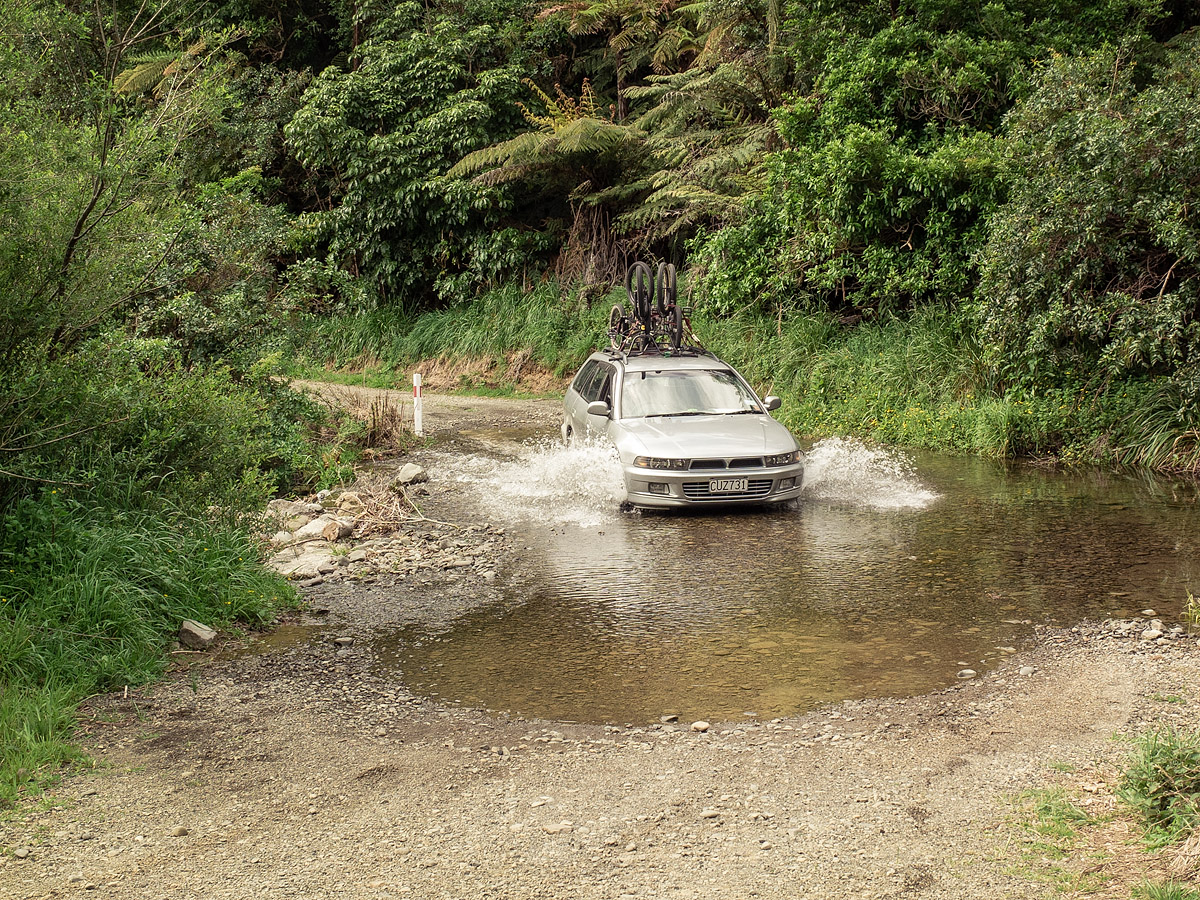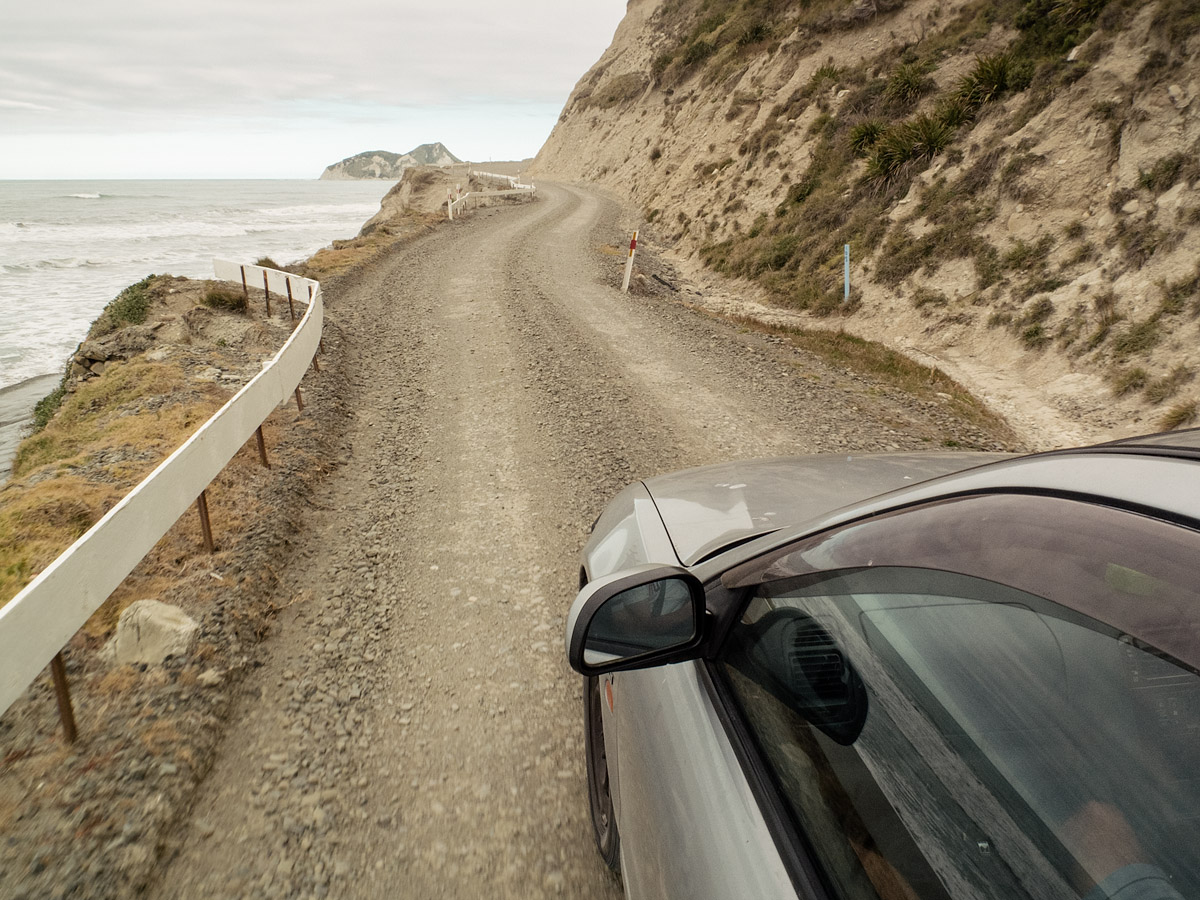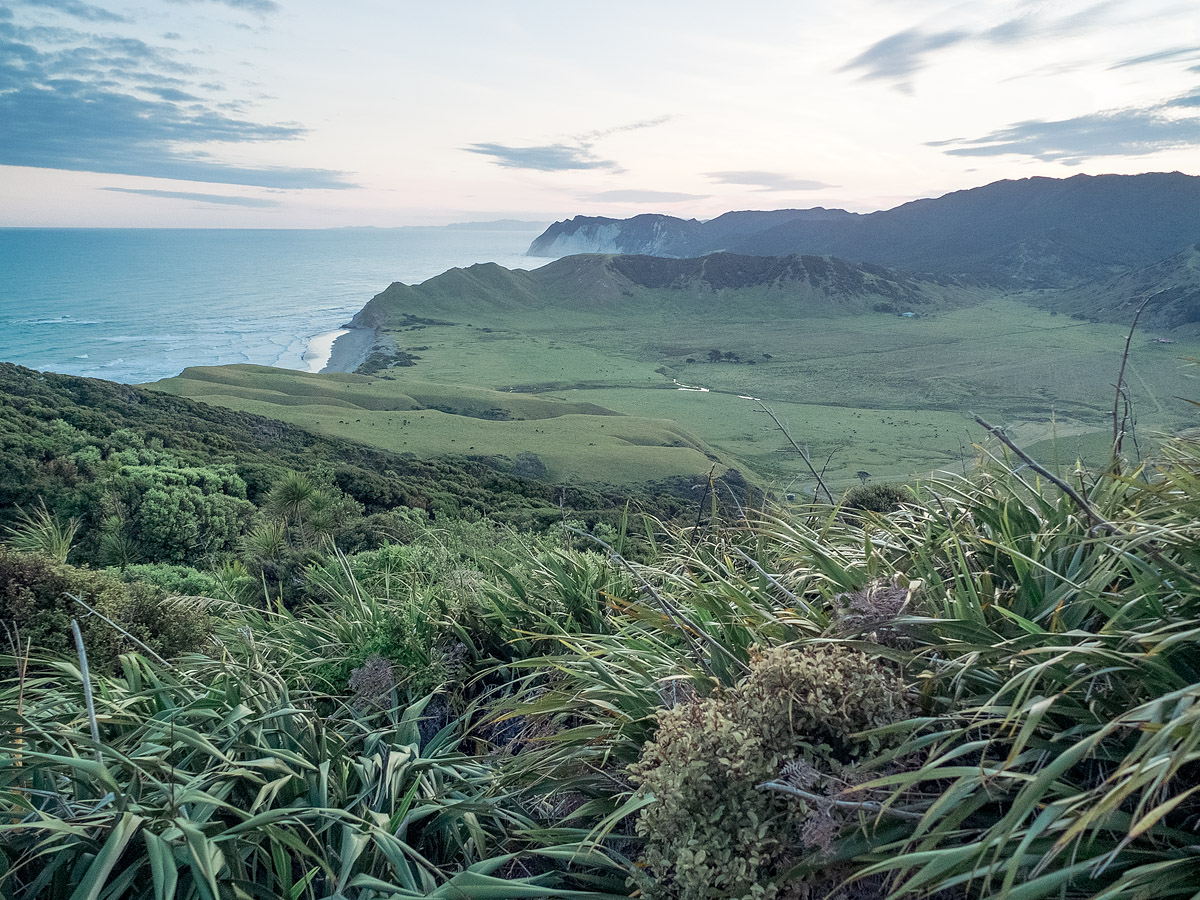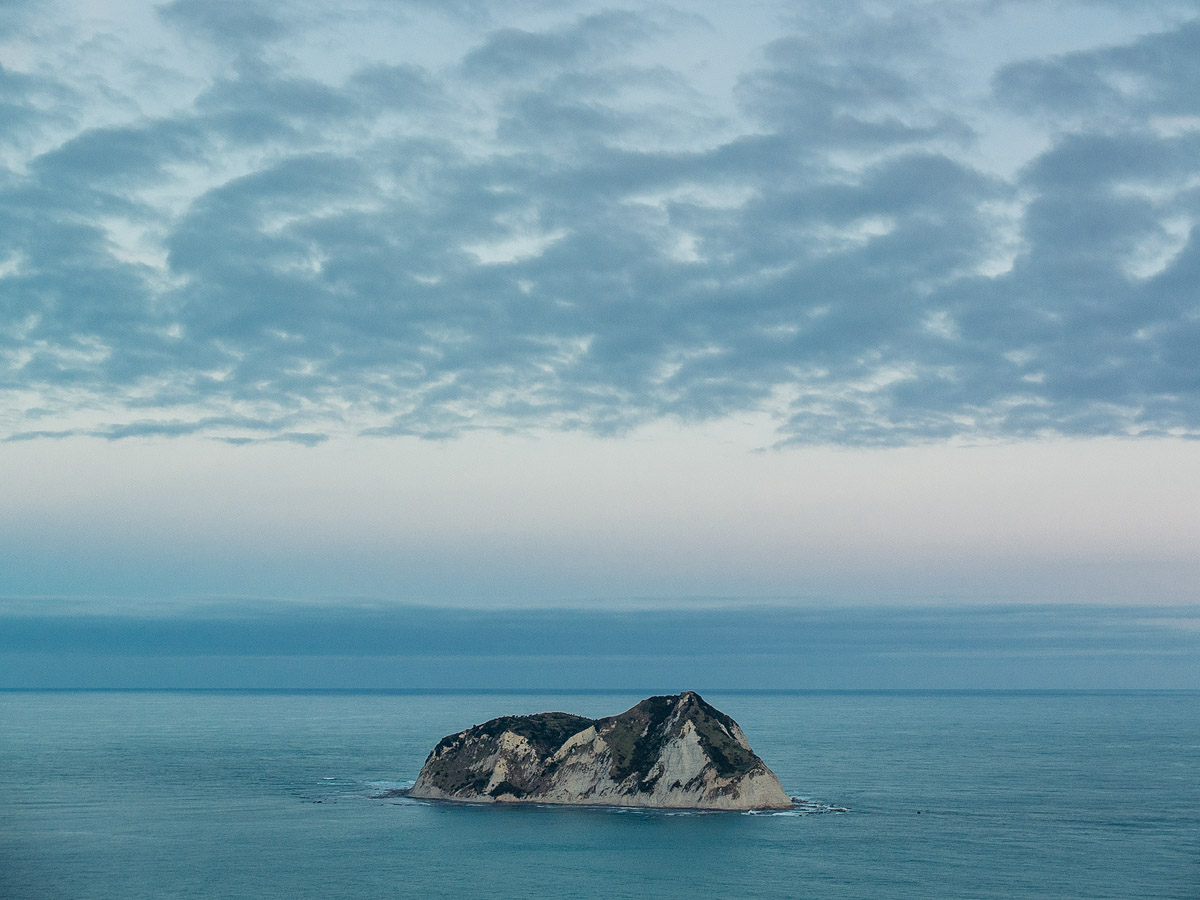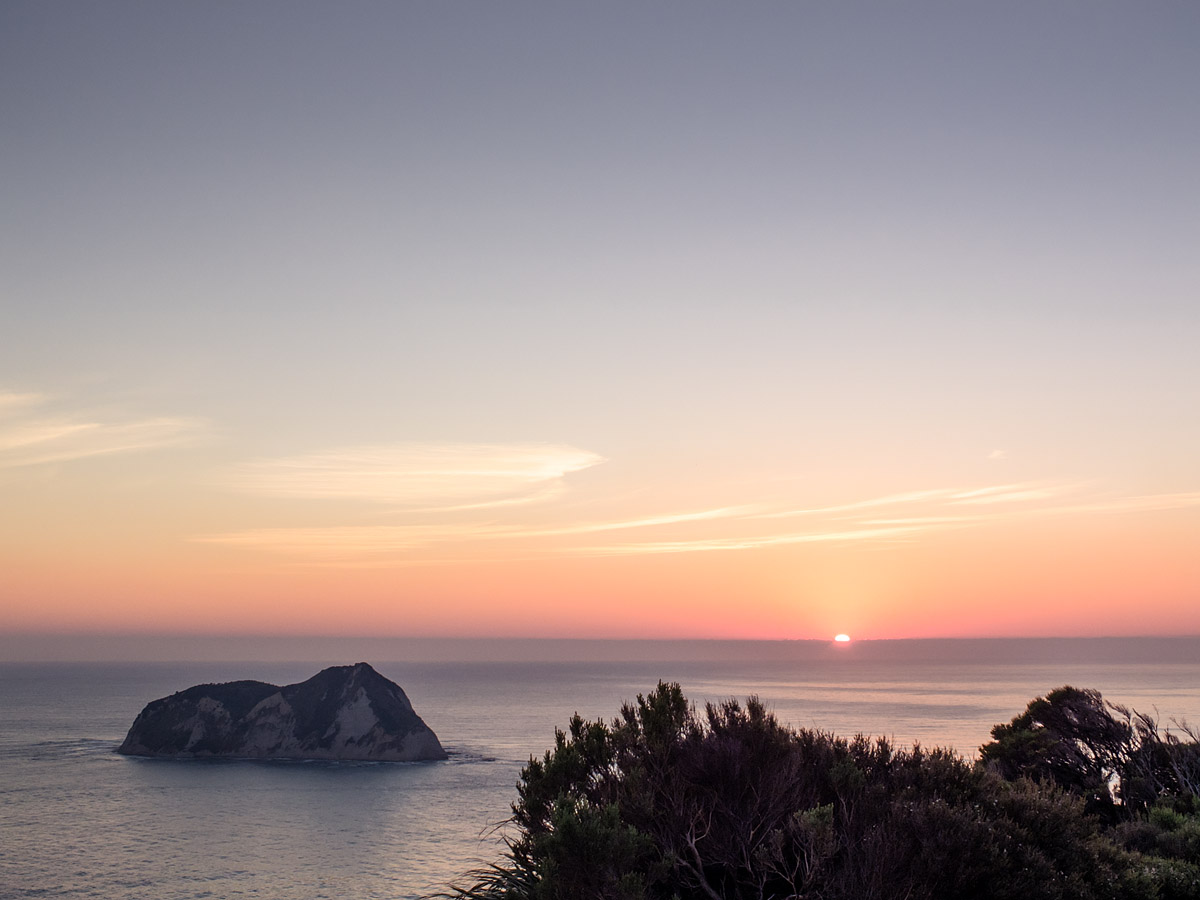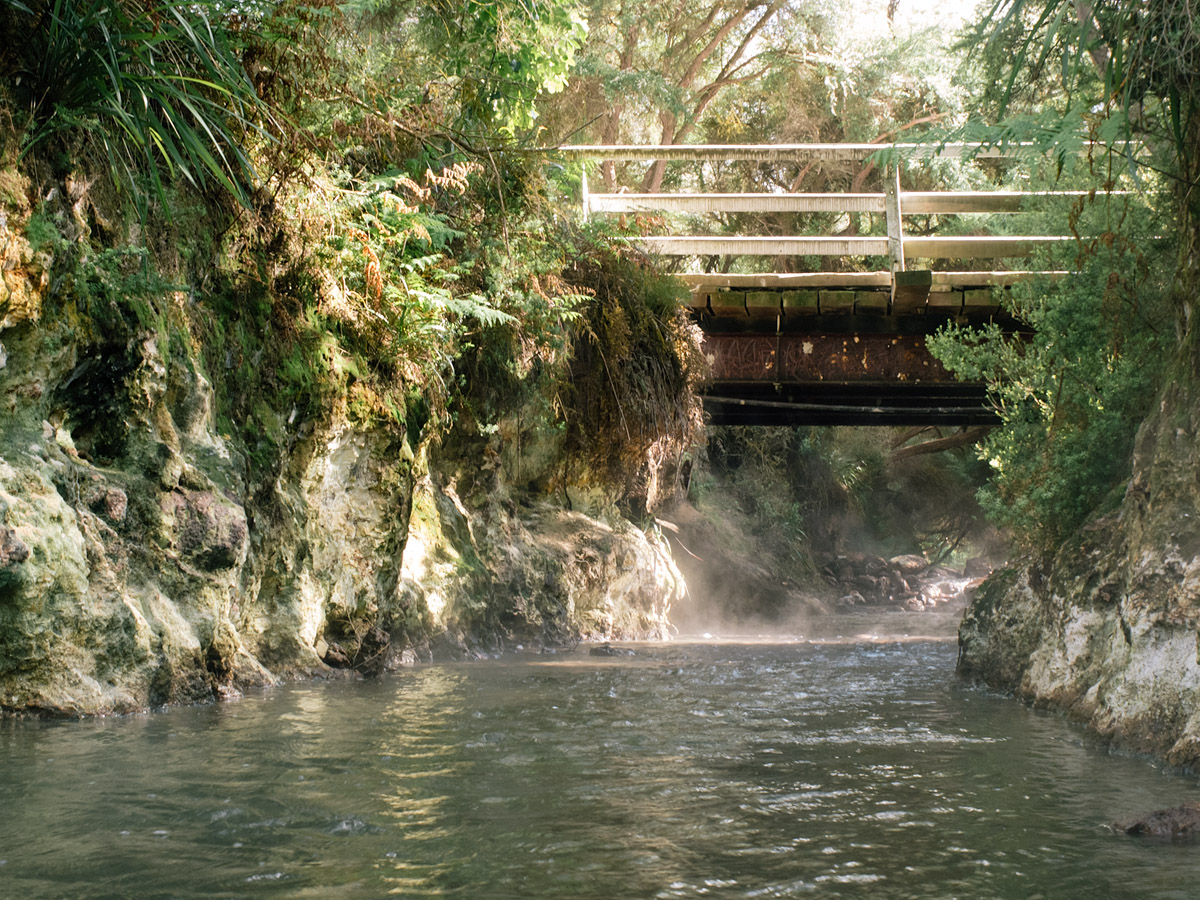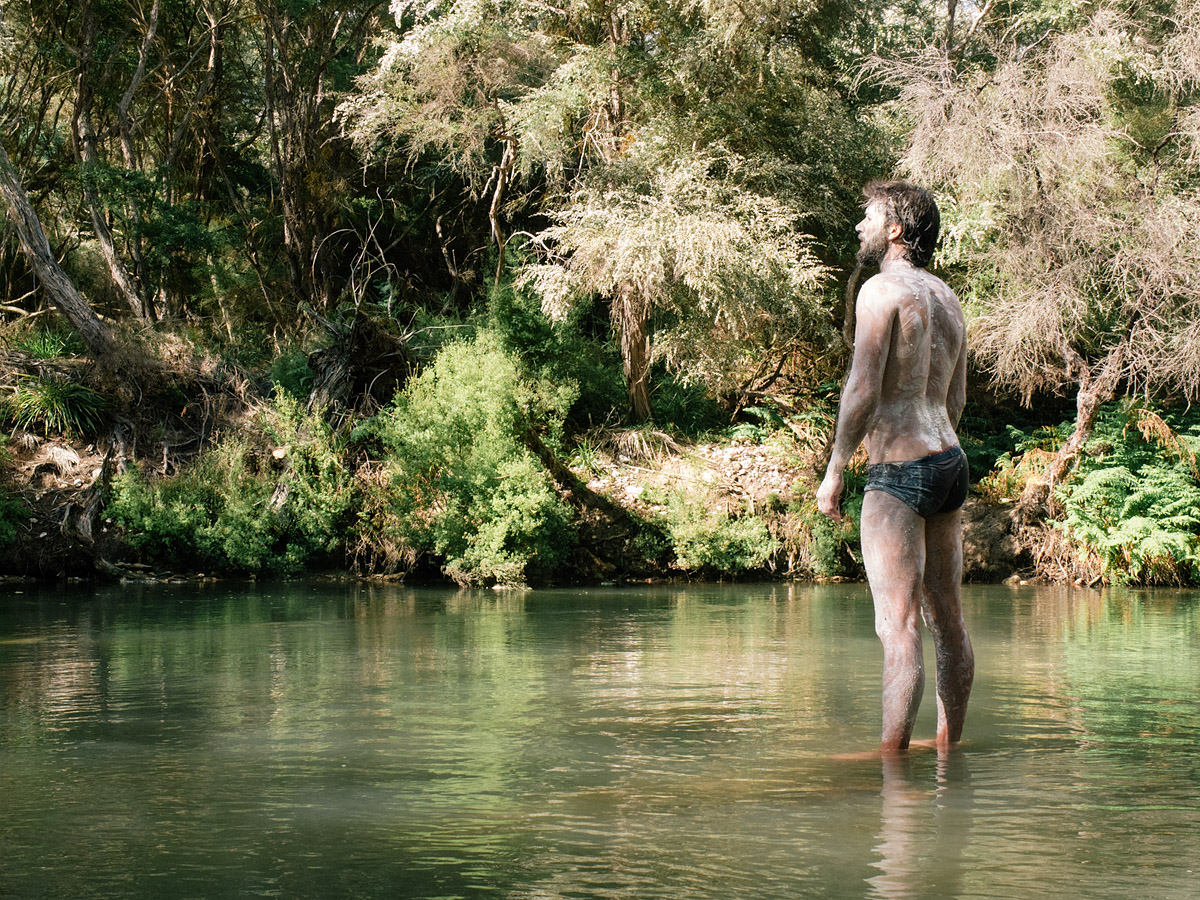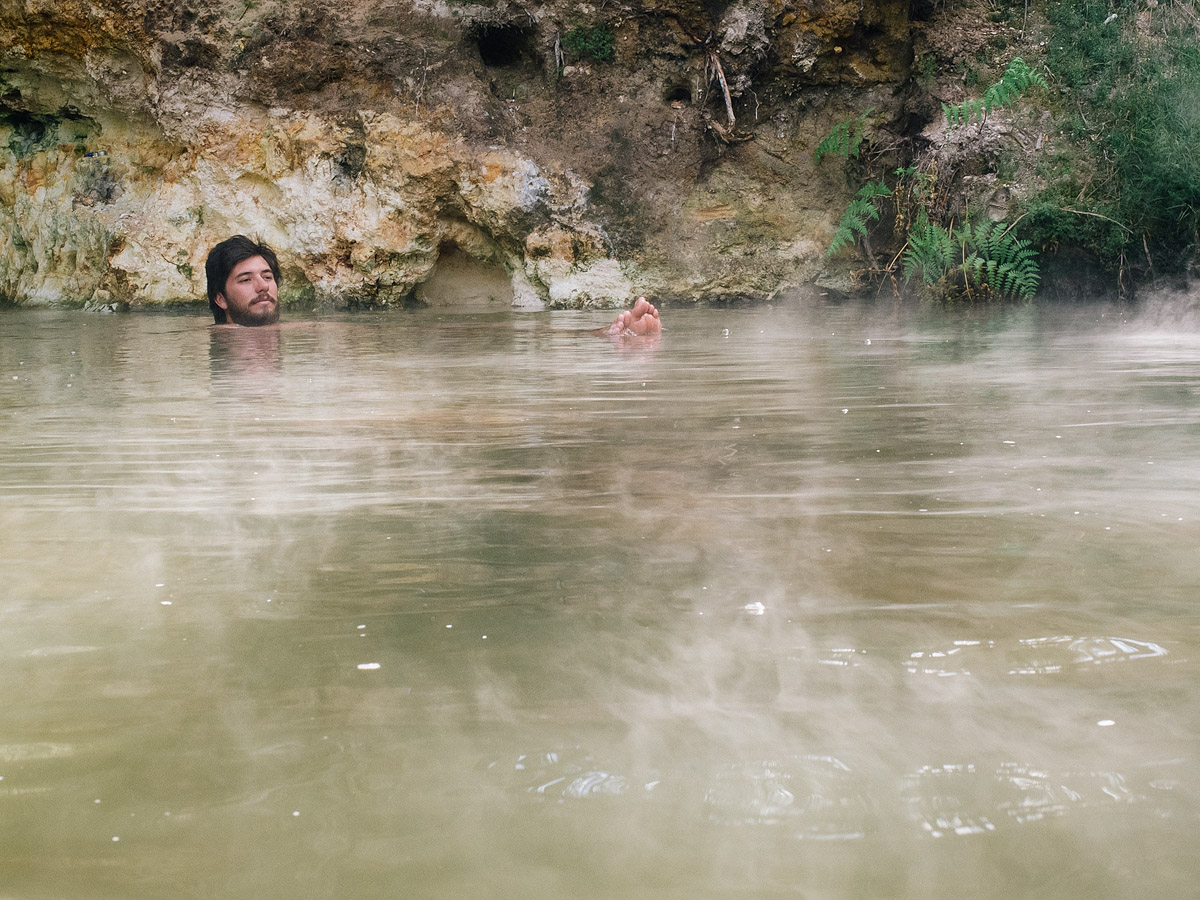After dropping Alfie off we headed east, as far east as it’s possible to go in the world without leaving a mainland. The last 25km of the East Cape Road is a plateau of gravel between cliffs and the Pacific, ending at the foot of a long set of steps up to a lighthouse, amongst a vast allotment of sheep pasture.
We climbed to the foot of the lighthouse and enjoyed the insignificance of being—at various points—the mostly easterly person wearing a hat, eating two-minute noodles, sleeping in a hammock, and so on.
I woke up just as it was beginning to get light. Wrapped in my sleeping bag I sat at the foot of the lighthouse and waited to be the first mainland person to see the sun rise. I imagined the International Date Line beyond the glimmering edge of the visible world. I wondered who, over that crease in time, across the flatness of the ocean, back in the previous day, was chasing the sun down with their gaze while I saw it up. Then I went back to sleep.
* * *
Further through our North Island journey we were recommended a spot called Hot and Cold in Wai-o-Tapu (Māori for “sacred waters”). It was the confluence of two streams, one cold and one naturally heated by geothermal activity. We would soak in the steaming water for as long as we could stand and then wade a few metres to plunge in the cold stream. Somewhere in between there was a mixer tap type-effect. The banks were cut from a clay which, mushed up into a paste and rubbed onto the skin, made a mask. Maybe it was from too many mornings washing in rivers or the sea; maybe because it was an unlikely place to find on the side of the road in a forest, but it was just about the cleanest I’d ever felt.
—
